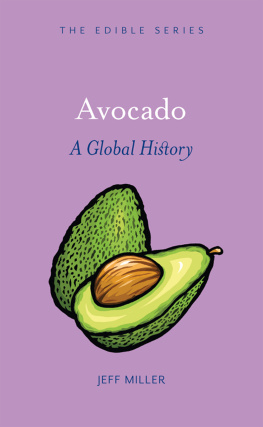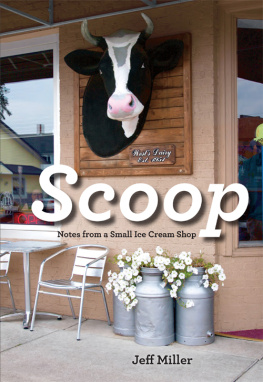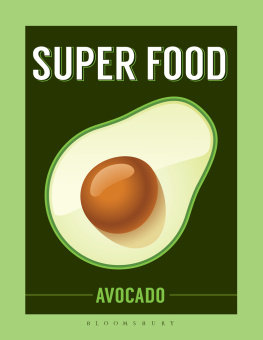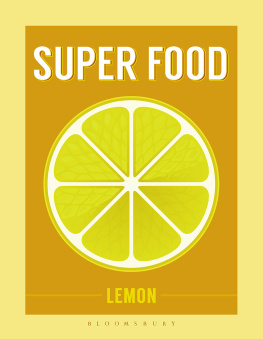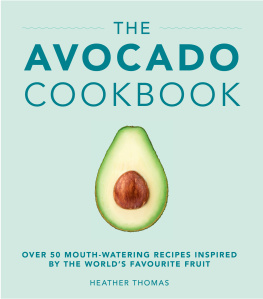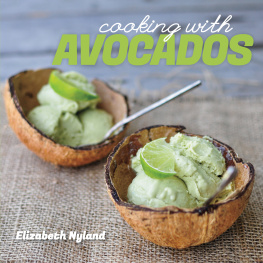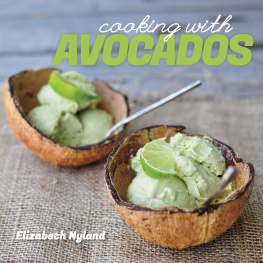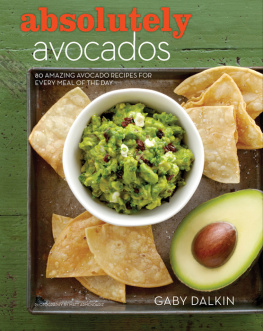AVOCADO

Edible
Series Editor: Andrew F. Smith
EDIBLE is a revolutionary series of books dedicated to food and drink that explores the rich history of cuisine. Each book reveals the global history and culture of one type of food or beverage.
Already published
Apple Erika Janik, Avocado Jeff Miller, Banana Lorna Piatti-Farnell, Barbecue Jonathan Deutsch and Megan J. Elias, Beans Nathalie Rachel Morris, Beef Lorna Piatti-Farnell, Beer Gavin D. Smith, Berries Heather Arndt Anderson, Biscuits and Cookies Anastasia Edwards, Brandy Becky Sue Epstein, Bread William Rubel, Cabbage Meg Muckenhoupt, Cake Nicola Humble, Caviar Nichola Fletcher, Champagne Becky Sue Epstein, Cheese Andrew Dalby, Chillies Heather Arndt Anderson, Chocolate Sarah Moss and Alexander Badenoch, Cocktails Joseph M. Carlin, Coffee Jonathan Morris, Corn Michael Owen Jones, Curry Colleen Taylor Sen, Dates Nawal Nasrallah, Doughnut Heather Delancey Hunwick, Dumplings Barbara Gallani, Edible Flowers Constance L. Kirker and Mary Newman, Eggs Diane Toops, Fats Michelle Phillipov, Figs David C. Sutton, Game Paula Young Lee, Gin Lesley Jacobs Solmonson, Hamburger Andrew F. Smith, Herbs Gary Allen, Herring Kathy Hunt, Honey Lucy M. Long, Hot Dog Bruce Kraig, Ice Cream Laura B. Weiss, Lamb Brian Yarvin, Lemon Toby Sonneman, Lobster Elisabeth Townsend, Melon Sylvia Lovegren, Milk Hannah Velten, Moonshine Kevin R. Kosar, Mushroom Cynthia D. Bertelsen, Mustard Demet Gzey, Nuts Ken Albala, Offal Nina Edwards, Olive Fabrizia Lanza, Onions and Garlic Martha Jay, Oranges Clarissa Hyman, Oyster Carolyn Tillie, Pancake Ken Albala, Pasta and Noodles Kantha Shelke, Pickles Jan Davison, Pie Janet Clarkson, Pineapple Kaori OConnor, Pizza Carol Helstosky, Pomegranate Damien Stone, Pork Katharine M. Rogers, Potato Andrew F. Smith, Pudding Jeri Quinzio, Rice Renee Marton, Rum Richard Foss, Salad Judith Weinraub, Salmon Nicolaas Mink, Sandwich Bee Wilson, Sauces Maryann Tebben, Sausage Gary Allen, Seaweed Kaori OConnor, Shrimp Yvette Florio Lane, Soup Janet Clarkson, Spices Fred Czarra, Sugar Andrew F. Smith, Sweets and Candy Laura Mason, Tea Helen Saberi, Tequila Ian Williams, Tomato Clarissa Hyman, Truffle Zachary Nowak, Vodka Patricia Herlihy, Water Ian Miller, Whiskey Kevin R. Kosar, Wine Marc Millon
Avocado
A Global History
Jeff Miller
REAKTION BOOKS
For Ken Smith: a good friend and ardent supporter.
Your support of others goes neither unnoticed nor unappreciated.
Published by Reaktion Books Ltd
Unit 32, Waterside
4448 Wharf Road
London N1 7UX, UK
www.reaktionbooks.co.uk
First published 2020
Copyright Jeff Miller 2020
All rights reserved
No part of this publication may be reproduced, stored in a retrieval system, or transmitted, in any form or by any means, electronic, mechanical, photocopying, recording or otherwise, without the prior permission of the publishers
Page references in the Photo Acknowledgements and
Index match the printed edition of this book.
Printed and bound in India by Replika Press Pvt. Ltd
A catalogue record for this book is available from the British Library
eISBN 9781789142402
Contents

1
The History of the Avocado

For a generation who grew up with avocado in the sandwich they bought at Pret A Manger, or who dipped into a giant bowl of guacamole at a Super Bowl party, or stopped at their local coffee shop for an espresso and a slice of avocado toast, the avocado must seem as though it has always been there. Such is its ubiquity today. But as little as one hundred years ago, the avocado was scarcely known outside of its ancestral homeland in the verdant valleys of Michoacn.
Today the avocado is as familiar as the apple, which it may soon displace as the most commonly consumed fruit in the world. The story of how a fruit that isnt sweet, becomes bitter when it is cooked, has an unfamiliar and slippery texture and is a very peculiar shade of green when ripe came to conquer the imagination of the world is an interesting one indeed. It is a story of lucky finds in orchards, a creative and Herculean marketing effort, and a seismic shift in peoples attitudes towards nutrition; of a berry that overcame the obstacles of unfamiliarity, high price and a distinctly odd mouthfeel to become the darling of everyone from the fashionistas of Paris to the cattle ranchers of Patagonia. This is the story of the avocado.
In the Beginning
Avocados are in the Laureceae or laurel family. Laureceae are basal angiosperms, which are one of the oldest groups of flowering plants on the planet, dating back over 100 million years. Laurels have been notable plants for millennia, and the terms laurels and laureate denote excellence. The terms poet laureate and baccalaureate derive from the name of the laurel tree. The sweet bay, or bay laurel, has the Latin name Laurus nobilius, or noble laurel. The laurel family, which is in the order Ranales, includes several trees that are culinarily and economically important, including cinnamon, sassafras, cassia, sweet bay, California bay and camphor. Avocados are the most economically important of them all.
Botanically, avocados are in the genus Persea, and are probably the most familiar plant in that plant family for the majority of people. The earliest Persea evolved on the first supercontinent, Gondwanaland. As the early supercontinents formed and broke up, Persea migrated with various smaller landmasses and travelled with what became Africa and Europe as well as North and South America. Examples of Persea are still found in various places around the world, but they thrived particularly in the landmasses that became North and South America, prospering in the warm, moist climatic conditions of the subtropics on these continents.
The avocado is a product of the current geologic era, the Cenozoic. When the volcanic eruptions of the late Neogene period created the Mesoamerican land-bridge that joined the continents of North and South America, the habitat that was created proved perfect for the evolution of the tree we now call the avocado. The ecological conditions of this area also gave us the plants that would evolve into corn (maize), chilli peppers, squashes, vanilla and chocolate. While avocados are grown today on every continent except Antarctica, the heritage of the tree is firmly associated with the Americas and the species is known as Persea americana.
Given the intense selection for fruit quality by humans over many millennia, the avocado is usually considered a domesticated plant, but the argument could be made that the avocado is only a semi-domesticate, owing to its heterozygous nature. An organism is considered heterozygous when genes for different characteristics are located at the same place within a chromosome. Which gene is expressed when the organism reproduces is random, so, as in humans, offspring are related to the parent, but are never exact copies of one parent or the other. The avocado is considered highly heterozygous by botanists and breeders because seeds grown from trees are extremely unpredictable when it comes to the resulting fruit quality. As is the case with apple seeds, trees grown from the seeds of a particular avocado tree are unlikely to resemble the parent tree. To get a scion that is a replica of the parent, it must be propagated vegetatively through budding and grafting. For orcharding purposes, avocado trees are almost universally propagated through grafting and budding, though researchers grow many trees from seed because desirable characteristics may be manifested in these offspring that were not present in the parent tree.

